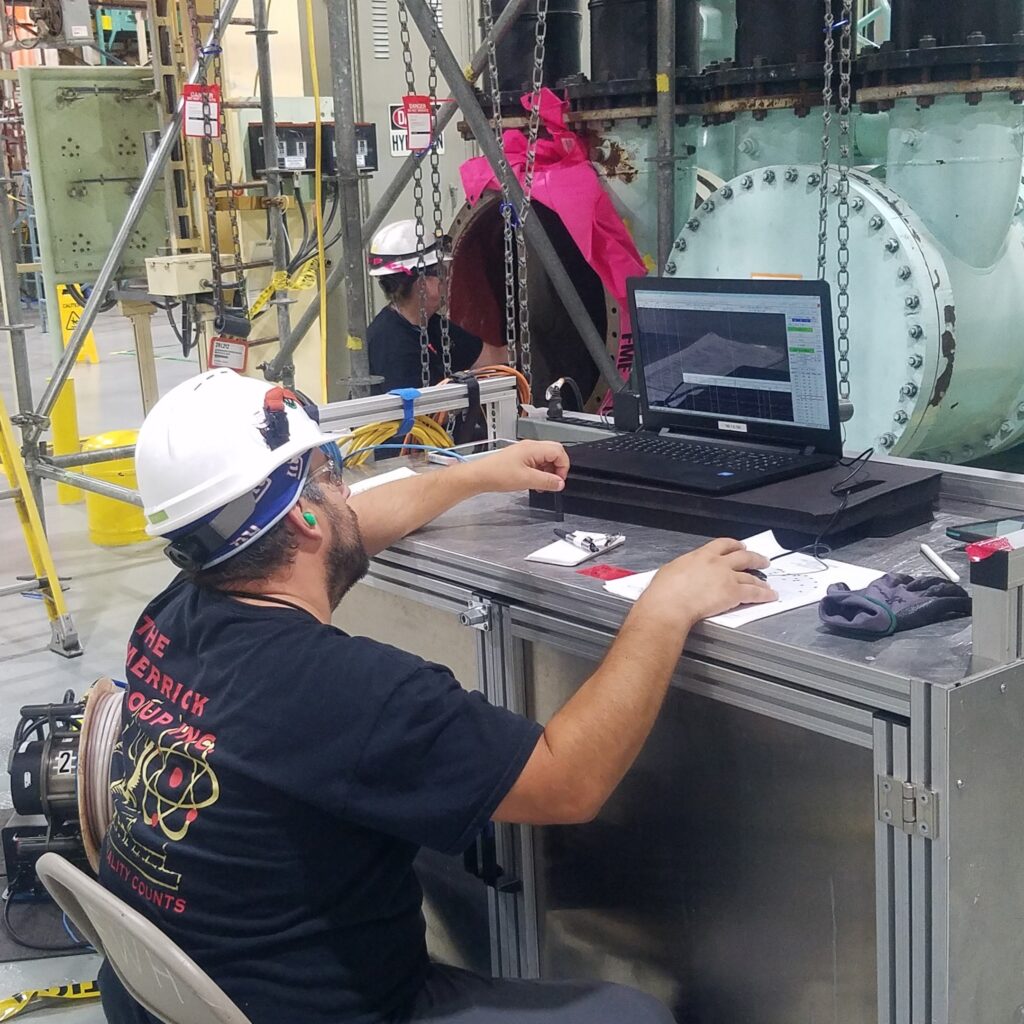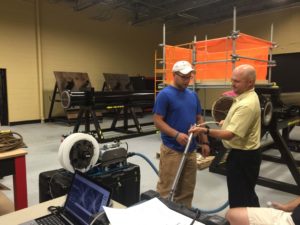A large part of regular maintenance for power plants and petrochemical facilities is making sure that there are no defects in their heat exchanger tubing that could lead to facility or component downtime. Eddy current testing is extremely important in making this determination and also helping to provide an overall assessment of component and system health. Regular eddy current inspection helps to minimize downtime and allows component replacement/repair to be done on a non-emergent schedule. Maintaining equipment properly and regularly helps to mitigate long-term costs.
How Does Eddy Current Testing Work?
The eddy current testing (ECT) non-destructive testing method is rooted in electromagnetism. ECT works by stimulating a coil of conductive wiring with an alternating current. A magnetic field is formed around the coil, and a secondary field is formed in the conductive object to be inspected (test piece). As the coil is moved along the test piece If the test piece has no flaws the impedence of the primary circuit remains constant. Flaws in the test piece will cause the impedence to change, alerting the trained technician to defects in the item that is being inspected.
How Often Should Eddy Current Testing Be Performed?
One of the most frequent uses of eddy current testing is to inspect the tubing that is an essential part of condensers and heat exchangers. These devices need frequently scheduled maintenance to ensure that they are operating at design efficiency. The frequency of maintenance, cleaning, and eddy current inspection is based on the operating parameters and the tubing and component materials as well as the operational and degradation history of the component or system. It is important to determine the condition of a component, then decide on a maintenance interval which minimizes the chances of costly failures and provides enough data monitor system health and to determine schedules for repair or replacement activities.
What Is the Next Step If Degradation Is Detected by Eddy Current Testing?
If problems with heat exchanger tubing are detected in during eddy current testing our expert staff members will assist you in determining the best course of action for mitigating the damage in a way that is cost-effective and inline with your budgetary guidelines.
At the Merrick Group, Inc. we offer eddy current testing as a part of our catalog of maintenance and inspection services. Our Level III project managers will answer your questions and perform inspections with your best interest in mind. This means helping you determine a cleaning and maintenance schedule that works best with your budget and within a timeframe that is most convenient for your business. Contact us today and ask us about our eddy current testing, as well as our other cleaning and maintenance services.




